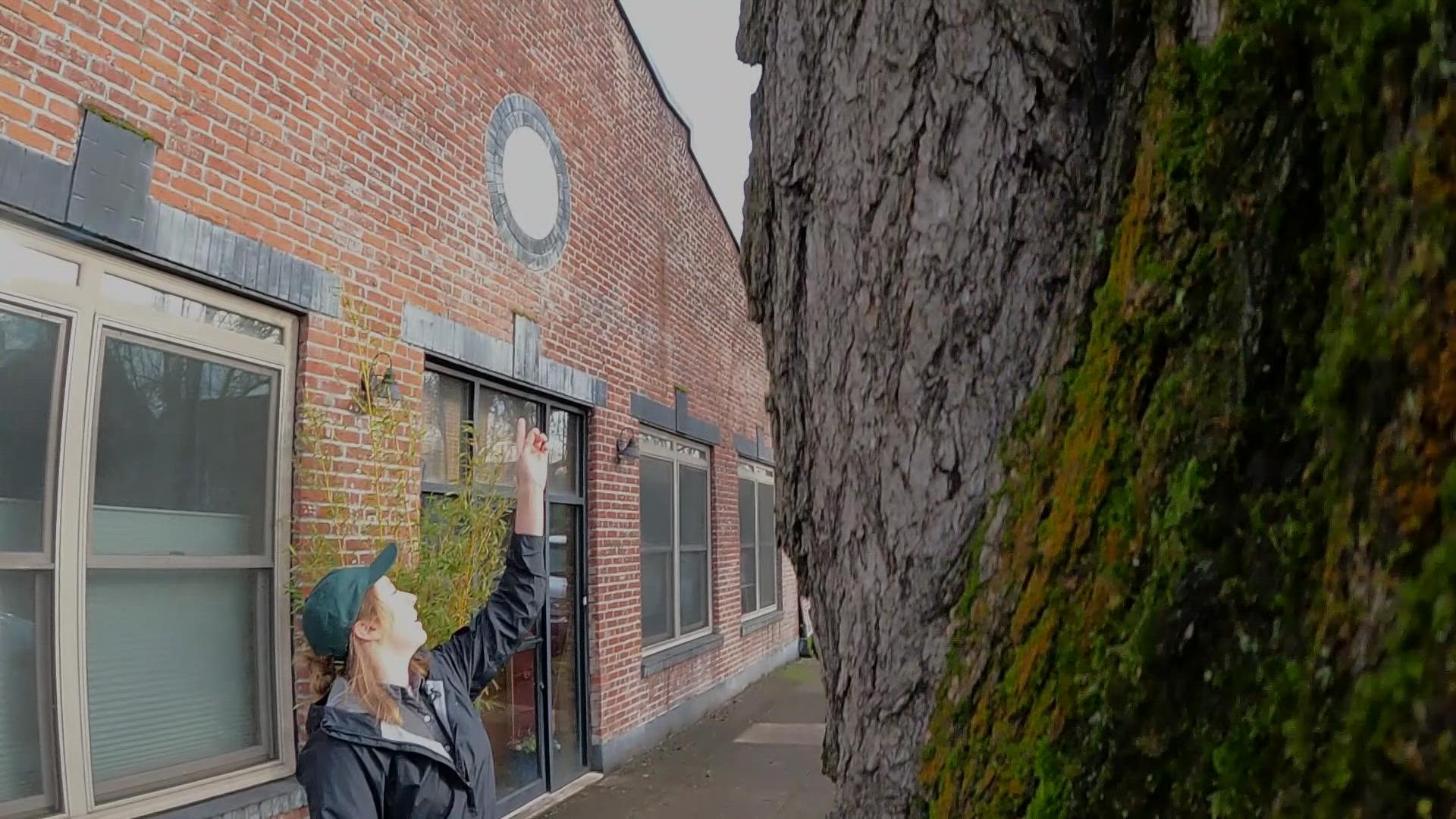PORTLAND, Ore. — When Brittany Oxford walks down any urban street, her eyes tend to drift upward.
Oxford, the new community assistance forester with the Oregon Department of Forestry, has gotten to be an expert at differentiating what kind of wires run through the branches of the trees that line our streets.
“Those are communication lines, so those aren’t a problem,” she said on a recent walk through Northwest Portland, pointing at a cluster of wires running through some foliage. “It’s the high-voltage lines you have to worry about.”
In her new role, Oxford helps cities across the state, both large and small, grow and maintain their urban forests. She might help a city take an inventory of their trees, advise on the best way to prune a specific species or offer suggestions for developing a municipal tree code.
Before joining the Department of Forestry, she worked with the City of Portland's urban forestry program, where she helped with an inventory of the city’s street trees.
One of the more surprising results: One in 10 of the trees planted along Portland’s streets are some variety of maple.
Oxford said that makes sense – maples are known for thriving in poor soil and provide much needed pops of bright color during the Northwest’s notoriously gray fall season – but having so many of the same kind of tree also presents problems.
Along a stretch of Northwest 27th Avenue, Oxford pointed to an entire block lined with cherry trees.
“Every single tree on this street is a cherry tree, so if you have a pest or a pathogen that comes in and attacks cherry trees, you're not just going to lose one individual, you're going to lose this whole street, so that's something that is scary,” she said.
And it’s not just the homogeneity of the types of trees that’s problematic, Oxford said. Many of the trees she sees are of similar size, too, meaning they were planted around the same time.
“So we have a lack of species diversity, but also a lack of age diversity and probably genetic diversity too,” she said.
On a wider scale, Oregon’s urban forests are facing other threats, too.
“I think the biggest threats to our urban forests are going to be things like climate change, increased temperature and extreme weather events,” she said.
During the 2021 heat dome, when temperatures in Portland spiked to a record 116 degrees, trees across Oregon were scorched in rural and urban forests alike.
But for all the threats trees face from climate change, they can provide climate solutions as well. Shade from trees lowers ambient air temperatures, and the water that evaporates from their foliage provides even more cooling.
That means more affluent, less diverse neighborhoods with lots of trees can see temperatures far lower than their less-shaded counterparts, which are often home to more low-income residents and people of color.
Northwest Portland saw temperatures as much as 30 degrees cooler than parts of East Portland during the heat dome, Oxford said.
“That's a big social inequality that comes with urban forestry that we want to take into account and help to mitigate and balance,” Oxford said.
And balance is key to the ethos Oxford brings to her work. As she sees it, it’s not just about how trees can help people or how people can help trees, but how we can help each other so everyone benefits.
“My focus is really on community and resilience and making healthier forests so that we have healthier communities and how all of those things touch each other.”

